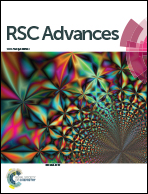The application of quality by design in the development of the liquid chromatography method to determine empagliflozin in the presence of its organic impurities
Abstract
Analysis of impurities is an important step in the quality control of pharmaceutical ingredients and final products. From drug synthesis or excipients, even in small concentrations, impurities may affect efficacy and safety. The method was developed following Quality by Design (QbD) for the analysis of the antidiabetic empagliflozin. The concept of QbD is used as a tool for the development of methods and formulations. Through predefined objectives and risk analysis, robust methodologies and reduced solvent consumption are developed. A simple HPLC method was developed and validated for the quantitative determination of empagliflozin and its organic impurities from the synthesis process. The method was carried out in a Shim-pack phenyl column with a mobile phase consisting of an acetonitrile/water mixture (72 : 28), with isocratic elution and the detector wavelength was 230 nm. The validation process, in accordance with international guidelines, shows that the method was linear, precise and accurate for empagliflozin, impurity 1 and impurity 2. Limits of detection (0.01, 0.02 and 0.01 μg mL−1) and quantification (0.10, 0.10 and 0.05 μg mL−1) were determined for EMPA, IMP1 and IMP2, respectively. The HPLC method for impurity determination in empagliflozin was linear, precise, accurate and robust. It can be successfully applied in the quality control of empagliflozin and the synthesis of impurities, being adequate for routine analysis.



 Please wait while we load your content...
Please wait while we load your content...